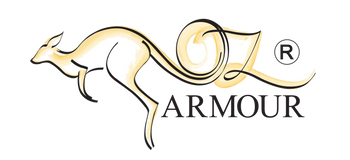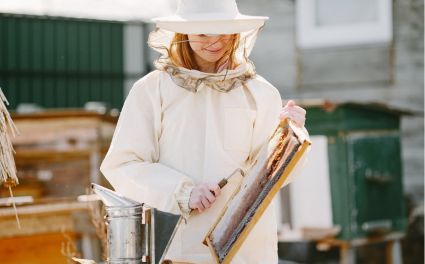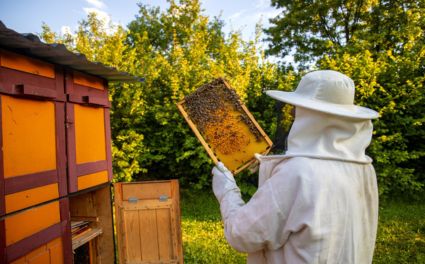Honey bees play a crucial role in beekeeping, providing honey, wax, and valuable pollination services. Understanding the different types of honey bees is essential for every beekeeper. This knowledge helps ensure effective bee colony management, accurate species identification, and overall hive health. In this guide, we’ll explore the various types of honey bees, their roles within the colony, and some essential beekeeping tips for better hive management.
Understanding Honey Bee Species
Honey bees are found all around the world, with several species adapted to different climates and habitats. Recognizing and identifying these species helps beekeepers make better management decisions.
Apis mellifera — The European honey bee, the most common and widely domesticated species used in modern beekeeping. It’s highly productive, resilient, and known for its adaptability.
Apis cerana — The Asian honey bee, smaller in size and less aggressive. It is efficient in warm climates and excellent at managing pests like the Varroa mite.
Apis dorsata — The giant honey bee, native to South and Southeast Asia. It is famous for building massive, open-air nests that can be seen on trees or cliffs.
Each type of honey bee exhibits distinct behaviors and physical traits, which makes proper bee identification a vital part of Learn Beekeeping programs and field experience. You can explore more educational articles about different species and their environments at Learn Beekeeping.

The Different Roles in a Bee Colony
A thriving bee nest operates through harmony and structure, where each bee contributes to the success of the colony. Understanding these roles enables beekeepers to observe and manage their beehives effectively.
Queen Bee
The queen bee is the colony’s heart. She lays up to 2,000 eggs daily and produces pheromones that regulate the behavior of worker bees and drones. Her strong presence ensures order and stability, allowing the colony to function efficiently.
Worker Bee
Worker bees perform nearly every task required to keep the hive alive — from collecting nectar and pollen to cleaning, feeding larvae, and defending the colony. They’re the backbone of honey production and hive maintenance.
Drone Bee
Drones, the male bees, have one purpose — to mate with a queen from another hive to maintain genetic diversity. After mating, drones die, having fulfilled their biological role. Their presence during the breeding season ensures colony strength and reproduction.
These roles emphasize why beekeepers must inspect hives regularly using safe and durable protective gear, such as Beekeeping Suits that provide full coverage and ventilation for long hive sessions.
Identifying Types of Honey Bees
Accurate honey bee identification involves paying attention to physical features, behavioral traits, and environmental factors.
-
Physical Characteristics: Observe size, color, and body markings.
-
Behavior: Each species has unique patterns — for instance, Apis cerana tends to be calmer, while Apis dorsata is highly defensive.
-
Environment: Climate and geography greatly affect colony temperament and survival.
Protective clothing like Beekeeping Jackets and Beekeeping Veils helps during field observations, ensuring comfort and sting-free inspections even in active colonies.
Beekeeping Basics and Colony Management
Proper beehive management ensures the well-being and productivity of every bee species.
-
Hive Inspection: Check regularly for brood health, food stores, and signs of disease.
-
Pest Control: Monitor for mites and parasites that can harm bees.
-
Nutrition: Supply sugar syrup or pollen patties during dearth periods.
During inspections, use protective accessories such as Beekeeping Gloves for handling frames, and Beekeeping Trousers for complete leg protection. These pieces of equipment from OZ Armour offer both flexibility and reliability during active work.
Additionally, ensure your hive is equipped with the right Beekeeping Equipments, including smokers, hive tools, and feeders, which can be found at Beekeeping Equipments.
The Importance of Pollination
Pollination is one of the most critical roles that honey bees play in global ecosystems. Every time a bee visits a flower, it transfers pollen that enables plants to produce fruits and seeds. This process supports biodiversity and food production.
Understanding the behaviors of different bees — like bumblebee vs honeybee, or identifying whether a structure is a beehive or wasp nest — helps beekeepers protect native pollinators and manage hives responsibly. You can explore related topics like bumblebee vs carpenter bee, difference between a beehive and a wasp nest, and even do bee suits protect from wasps through insightful reads such as The Secret Lives of Bees.
Practical Beekeeping Tips
Whether you’re a beginner or experienced beekeeper, the following practices ensure your hive remains strong and productive:
-
Use Quality Gear: Invest in strong beekeeping suits, veils, and gloves for full-body protection.
-
Proper Ventilation: Keep the hive well-ventilated to prevent moisture buildup.
-
Regular Monitoring: Watch for signs of stress, queen health, or disease.
-
Safe Handling: Learn removing a bee sting techniques to manage accidents quickly.
For family-based beekeepers, beekeeping kids suits provide the same sting protection in smaller, lighter designs. You can explore options at Beekeeping Kids Suits.
And for full mobility, especially when working in large apiaries, use beekeeping ankle protection to seal pant cuffs and avoid accidental stings near the legs. Check out premium protective add-ons at Beekeeping Ankle Protection.
Bee Suits and Gear from OZ Armour
While understanding bees is important, protecting yourself during hive inspections is equally vital. OZ Armour offers a wide range of beekeeping jackets, veils, gloves, and full-body beekeeping suits, all engineered for durability and comfort.
Their suits feature layered mesh for ventilation and strength, allowing beekeepers to work safely even with aggressive species like Apis dorsata. For style and functionality combined, the brand’s Pink Bee Suits have become a favorite among modern beekeepers who want both visibility and safety.
By choosing professional-grade gear, beekeepers ensure a stress-free working environment — essential for managing colonies, inspecting brood, or performing hive splits with precision.
The Lives of Bees: More Than Just Honey
Beyond honey production, the lives of bees reflect complex communication and teamwork. Bees maintain hive temperature, protect the queen, and even signal food sources through dance movements. Each role — from the queen to the worker — contributes to the survival of the entire colony.
Understanding this natural harmony gives beekeepers a deeper appreciation for the ecosystem they nurture. Dive into more fascinating reads on bee communication and behavior in Read More Blogs About Beekeeping.

Conclusion
Recognizing and understanding the different types of honey bees is essential for successful and responsible beekeeping. From Apis mellifera to Apis dorsata, each species contributes uniquely to pollination and honey production.
By mastering bee identification, understanding colony roles, and maintaining consistent hive care, beekeepers can ensure thriving colonies year after year.
Equipping yourself with reliable gear — including beekeeping jackets, gloves, veils, and beekeeping suits — ensures comfort and safety in every inspection. Brands like OZ Armour continue to set industry standards in quality, design, and durability.
For continuous learning, explore more insights at Learn Beekeeping and related topics such as bee nest, difference between a beehive and a wasp nest, and removing a bee sting to enhance your knowledge and skills.
Beekeeping isn’t just about honey — it’s about stewardship, respect, and understanding the remarkable world of bees. With proper education, safe practices, and the right equipment, you’ll cultivate a thriving, harmonious relationship with your colonies.












